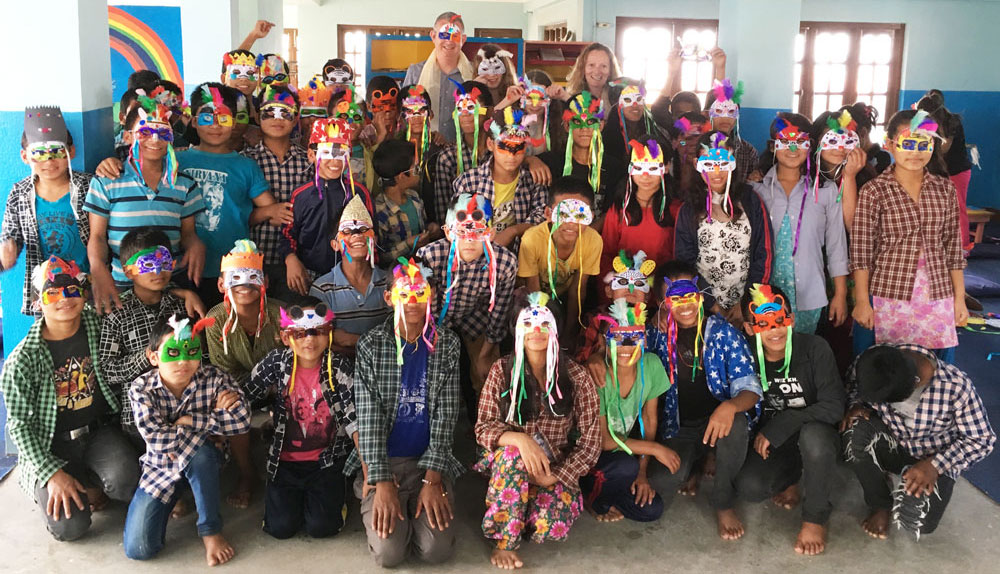
Sustainability
When she started the business, Tania wanted to be able to create something beautiful while doing something good. She aimed to provide a sustainable framework and to benefit the communities involved in the production of her rugs.
Now more than ever, social responsibility towards both people and planet is essential to creating a sustainable future. This is an ongoing effort and as we grow and evolve, we hope to do much more.
Now more than ever, social responsibility towards both people and planet is essential to creating a sustainable future. This is an ongoing effort and as we grow and evolve, we hope to do much more.
People
GoodWeave:
Every one of our rugs is certified by GoodWeave which aims to eliminate child labour and to improve working conditions for adults. Tania Johnson has been a member of GoodWeave since forming the business and is a strong supporter of their work. From the start, she wanted to be sure her rugs were produced ethically and to help the communities involved in their production. Being a member of GoodWeave has ensured this can happen.
Tania has visited GoodWeave’s Hamro Ghar in Kathmandu a couple of times. Meaning “our home”, Hamro Ghar is a rehabilitation centre for children rescued from the rug looms. While it is illegal in Nepal for children under 14 years old to work, many are forced to do so, some as young as five.
On one visit, Tania was accompanied by her husband and daughters and together they undertook an art project with the children. At the time, Tania’s daughters were the same age, even older, than many of these children were when they left their homes and were forced to work on the looms. It is heartbreaking to know how they have suffered yet the focus at Hamro Ghar is seeing children who are happy, playing, learning and being cared for. Seeing this first-hand has resonated deeply with Tania and made her proud to support the work GoodWeave is doing.
Every one of our rugs is certified by GoodWeave which aims to eliminate child labour and to improve working conditions for adults. Tania Johnson has been a member of GoodWeave since forming the business and is a strong supporter of their work. From the start, she wanted to be sure her rugs were produced ethically and to help the communities involved in their production. Being a member of GoodWeave has ensured this can happen.
Tania has visited GoodWeave’s Hamro Ghar in Kathmandu a couple of times. Meaning “our home”, Hamro Ghar is a rehabilitation centre for children rescued from the rug looms. While it is illegal in Nepal for children under 14 years old to work, many are forced to do so, some as young as five.
On one visit, Tania was accompanied by her husband and daughters and together they undertook an art project with the children. At the time, Tania’s daughters were the same age, even older, than many of these children were when they left their homes and were forced to work on the looms. It is heartbreaking to know how they have suffered yet the focus at Hamro Ghar is seeing children who are happy, playing, learning and being cared for. Seeing this first-hand has resonated deeply with Tania and made her proud to support the work GoodWeave is doing.

Mask making at Hamro Ghar, Kathmandu
Manufacturing:
Tania has worked closely with the same manufacturer since starting the business and the skilled artisans we work with in Nepal are at the core of everything we do. The carpet weaving industry in Nepal grew with the influx of refugees from Tibet in the 1960s who brought with them ancient hand knotting techniques that have hardly changed over centuries. This still provides the basis for rug production in Nepal today with skilled local artisans continuing to perform most of the processes by hand. With each of her regular visits to Kathmandu, Tania’s connection with the people and country has deepened. Tania is proud to support the traditional craftsmanship and to contribute to providing sustainable employment to many people in the weaving community.
Since the 2015 earthquake in Nepal we have donated a portion of all sales directly to our mill. This donation has gone towards the weavers’ children providing extras such as books and schoolbags
Tania has worked closely with the same manufacturer since starting the business and the skilled artisans we work with in Nepal are at the core of everything we do. The carpet weaving industry in Nepal grew with the influx of refugees from Tibet in the 1960s who brought with them ancient hand knotting techniques that have hardly changed over centuries. This still provides the basis for rug production in Nepal today with skilled local artisans continuing to perform most of the processes by hand. With each of her regular visits to Kathmandu, Tania’s connection with the people and country has deepened. Tania is proud to support the traditional craftsmanship and to contribute to providing sustainable employment to many people in the weaving community.
Since the 2015 earthquake in Nepal we have donated a portion of all sales directly to our mill. This donation has gone towards the weavers’ children providing extras such as books and schoolbags
Planet
Materials:
By their very nature, handmade rugs are one of the most sustainable products. Highly durable and made to last generations, they are not throwaway goods.
Our hand knotted rugs are made with wool and silk, both of which are all-natural, renewable fibres. The wool we use in our rugs is Tibetan wool from sheep that live high in the Himalayas. The unique natural qualities that help protect the sheep in this harsh environment provide a high level of lanolin which makes the wool used in our rugs naturally durable and stain resistant. The use of natural materials and the age-old manual processes used to produce the weaving yarn helps preserve the natural properties of the wool and determine the distinctive fine quality particular to Nepalese rugs.
Using these natural materials that are unique to the region is a key component in helping to sustain the traditional art of rug making in Nepal. Preserving these ancient techniques in the face of globalisation helps provide both beautiful rugs and a vital source of income in one of the poorest countries in the world.
By their very nature, handmade rugs are one of the most sustainable products. Highly durable and made to last generations, they are not throwaway goods.
Our hand knotted rugs are made with wool and silk, both of which are all-natural, renewable fibres. The wool we use in our rugs is Tibetan wool from sheep that live high in the Himalayas. The unique natural qualities that help protect the sheep in this harsh environment provide a high level of lanolin which makes the wool used in our rugs naturally durable and stain resistant. The use of natural materials and the age-old manual processes used to produce the weaving yarn helps preserve the natural properties of the wool and determine the distinctive fine quality particular to Nepalese rugs.
Using these natural materials that are unique to the region is a key component in helping to sustain the traditional art of rug making in Nepal. Preserving these ancient techniques in the face of globalisation helps provide both beautiful rugs and a vital source of income in one of the poorest countries in the world.
Carbon Offsetting:
We are conscious that shipping our rugs and samples around the world via airfreight is not ideal. While we continue to think about other options and consider how we can get our rugs across the globe quickly but thoughtfully, we are for now looking at ways we can offset our carbon footprint. Since January 2020, we are offsetting all our shipments through myclimate contributing to projects which are reducing emissions in developing countries such as this one to develop and distribute small biogas systems in Nepal.
The projects meet the highest standards (gold standard, Plan Vivo) and contribute to the UN’s sustainable development goals. Myclimate projects not only reduce greenhouse gas emissions but also contribute to social, ecological and economic development.
We are conscious that shipping our rugs and samples around the world via airfreight is not ideal. While we continue to think about other options and consider how we can get our rugs across the globe quickly but thoughtfully, we are for now looking at ways we can offset our carbon footprint. Since January 2020, we are offsetting all our shipments through myclimate contributing to projects which are reducing emissions in developing countries such as this one to develop and distribute small biogas systems in Nepal.
The projects meet the highest standards (gold standard, Plan Vivo) and contribute to the UN’s sustainable development goals. Myclimate projects not only reduce greenhouse gas emissions but also contribute to social, ecological and economic development.

